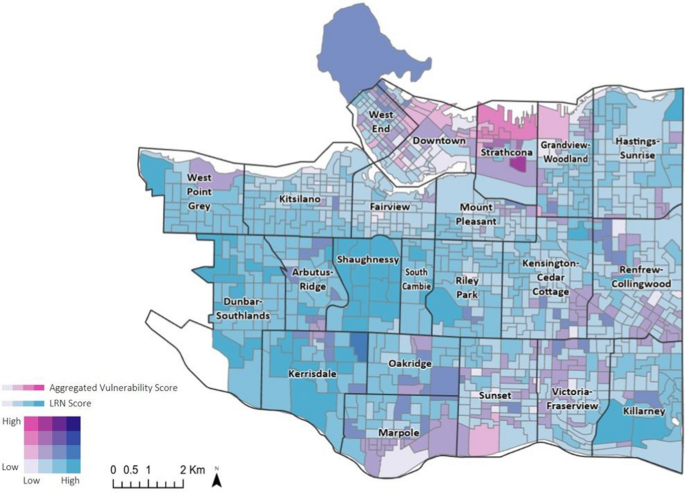CHANS Lab PhD candidate, Jo Fitzgibbons, and team found that the most socially vulnerable areas of Vancouver are least likely to have access to restorative nature.
Jo joined Dr. Tahia Devisscher, Taelynn Lam, Ingrid Jarvis, Derek Li, and Dr. Matt Mitchell in an article out in Ambio to propose a new “local restorative nature” index, which considers urban natural areas’ ability to provide a sense of sanctuary and serenity. They then mapped its distribution in relation to social vulnerability in Vancouver, BC (see figure below), finding major inequities in access to restorative nature corresponding to social vulnerabiltiy. The restorative nature index could also be applied in other cities around the world to help them identify vulnerable areas and plan for equity.
Read more about the paper in the CBC and the Daily Hive.

Figure 6 from the paper demonstrates the spatial relationship between social vulnerability and local restorative nature. Areas that are bright pink are both socially vulnerable and lack access to restorative nature. These represent high priority areas to restore nature (e.g., plant native vegetation, allow trees to grow to maturity), thereby reducing harm to people.
